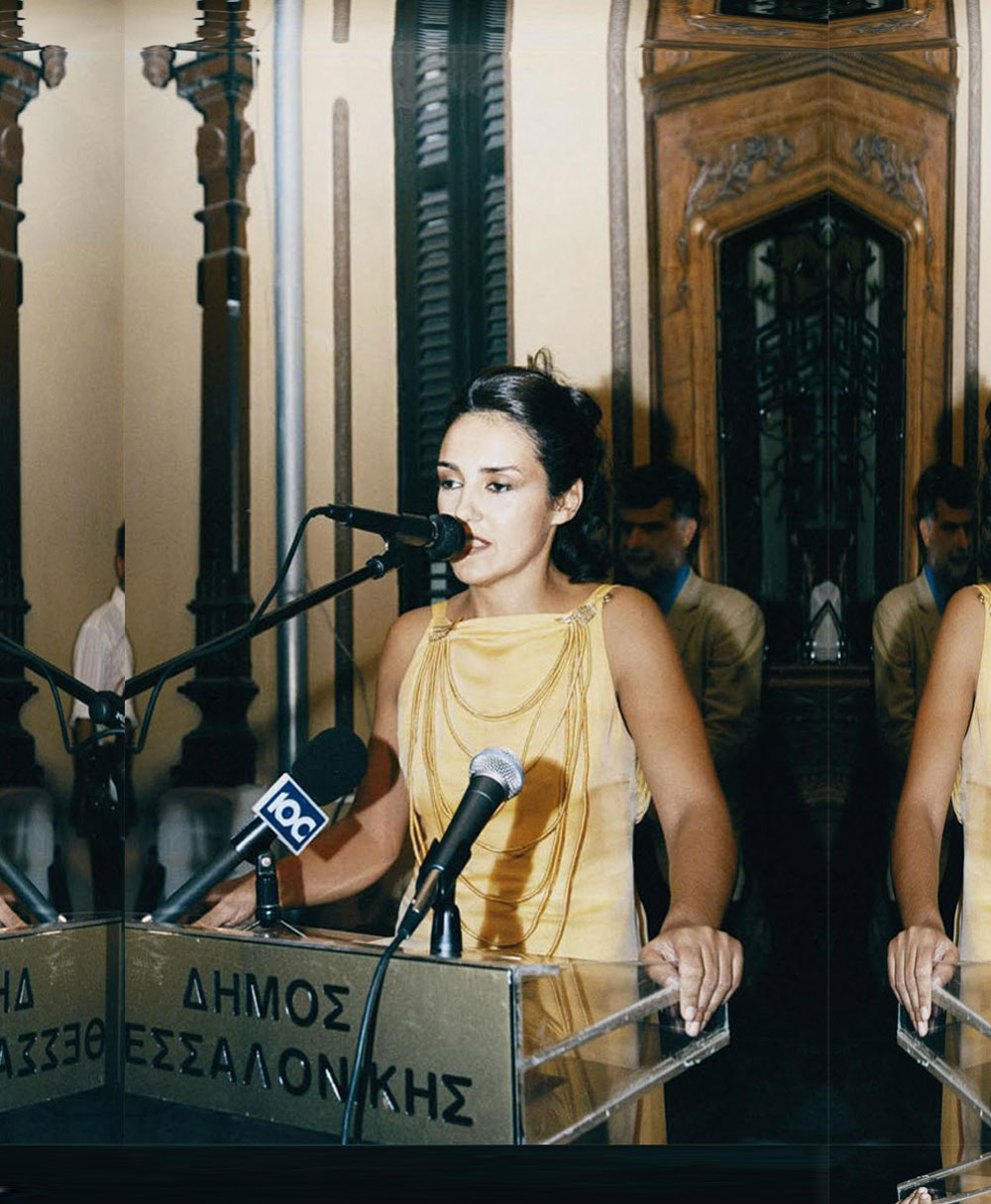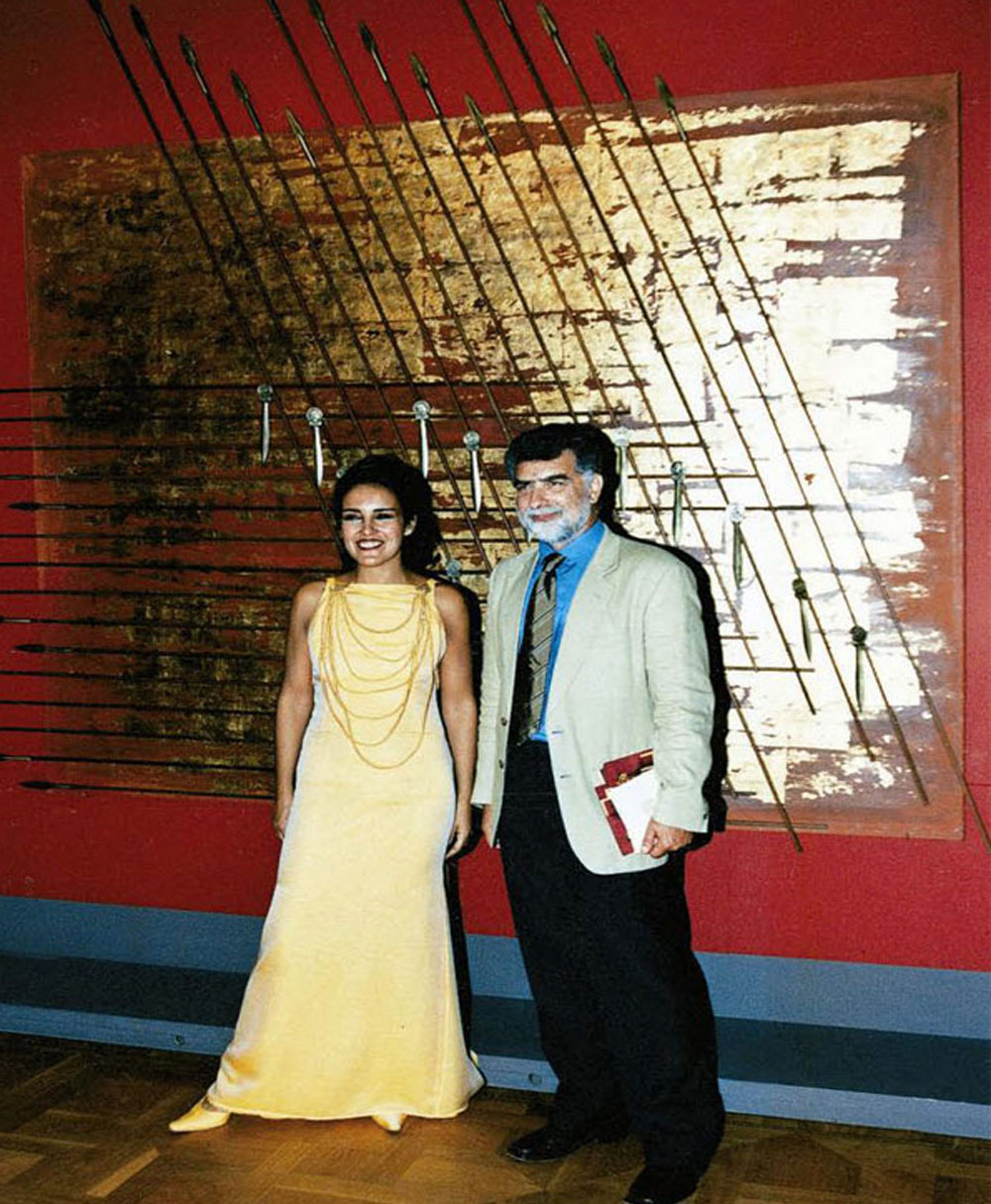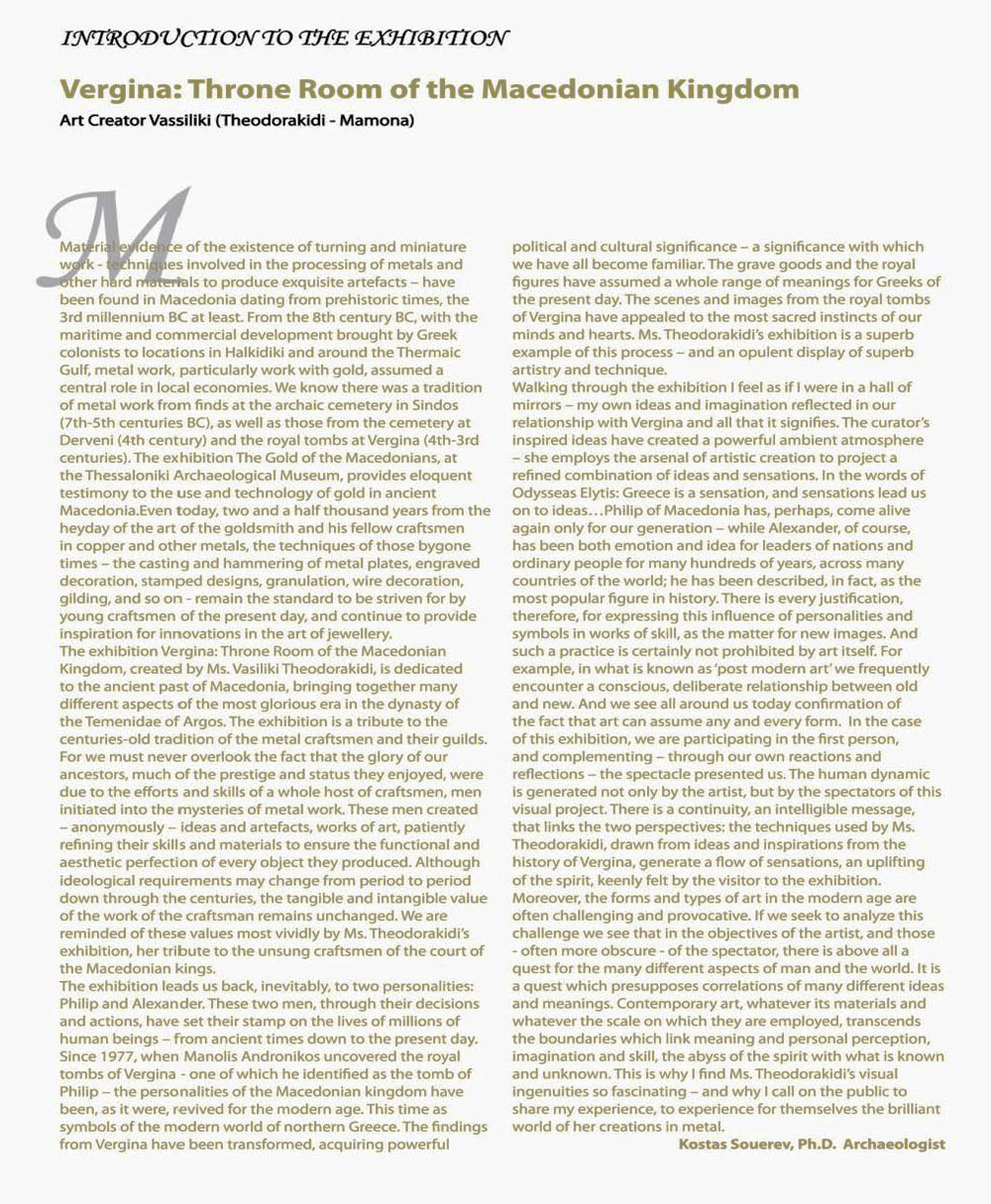"Vergina: Throne Room of the Macedonian Kingdom" - Dimitria Festival, Thessaloniki, Greece
Vassiliki presented her exhibition titled "Vergina: Throne Room of the Macedonian Kingdom", a tribute to the the grandeur of the Macedonian Kingdom of King Philip II and Alexander the Great. As the renown archaeologist Dr. Konstantinos Sueref describes: "We are reminded of these values most vividly by Ms. Theodorakidi's exhibition, her tribute to the unsung craftsmen of the court of the Macedonian kings. The exhibition leads us back, inevitably, to two personalities: Philip and Alexander. These two men, through their decisions and actions, have set their stamp on the lives of millions of human beings - From ancient times down to the present day. Since 1977, when Manolis Andronikos uncovered the royal tombs of Vergina - one of which he identified as the tomb of Philip - the personalities of the Macedonian kingdom have been, as it were, revived for the modern age. This time as symbols of the modern world of northern Greece. The findings from Vergina have been transformed, acquiring powerful political and cultural significance - a significance with which we have all become familiar. The grave goods and the royal figures have assumed a whole range of meanings for Greeks of the present day. The scenes and images from the royal tombs of Vergina have appealed to the most sacred instincts of our minds and hearts. Ms.Theodorakidi's exhibition is a superb example of this process - and an opulent display of superb artistry and technique. Walking through the exhibition I feel as if I were in a hall of mirrors - my own ideas and imagination reflected in our relationship with Vergina and all that it signifies. The curator's inspired ideas have created a powerful ambient atmosphere - she employs the arsenal of artistic creation to project a refined combination of ideas and sensations. In the words of Odysseas Elytis: Greece is a sensation, and sensations lead us on to ideas...Philip of Macedonia has, perhaps, come alive again only for our generation - while Alexander, of course, has been both emotion and idea for leaders of nations and ordinary people for many hundreds of years, across many countries of the world; he has been described, in fact, as the most popular figure in history. (...) In the case of this exhibition, we are participating in the first person, and complementing - through our own reactions and reflections - the spectacle presented us. The human dynamic is generated not only by the artist, but by the spectators of this visual project. There is a continuity, an intelligible message, that links the two perspectives: the techniques used by Ms. Theodorakidi, drawn from ideas and inspirations from the history of Vergina, generate a flow of sensations, an uplifting of the spirit, keenly felt by the visitor to the exhibition. Moreover, the forms and types of art in the modern age are often challenging and provocative. If we seek to analyze this challenge we see that in the objectives of the artist, and those - often more obscure - of the spectator, there is above all a quest for the many different aspects of man and the world. It is a quest which presupposes correlations of many different ideas and meanings. Contemporary art, whatever its materials and whatever the scale on which they are employed, transcends the boundaries which link meaning and personal perception, imagination and skill, the abyss of the spirit with what is known and unknown. This is why I find Ms. Theodorakidi's visual ingenuities so fascinating - and why I call on the public to share my experience, to experience for themselves the brilliant world of her creations in metal."-
cms/media/k2/galleries/20/




